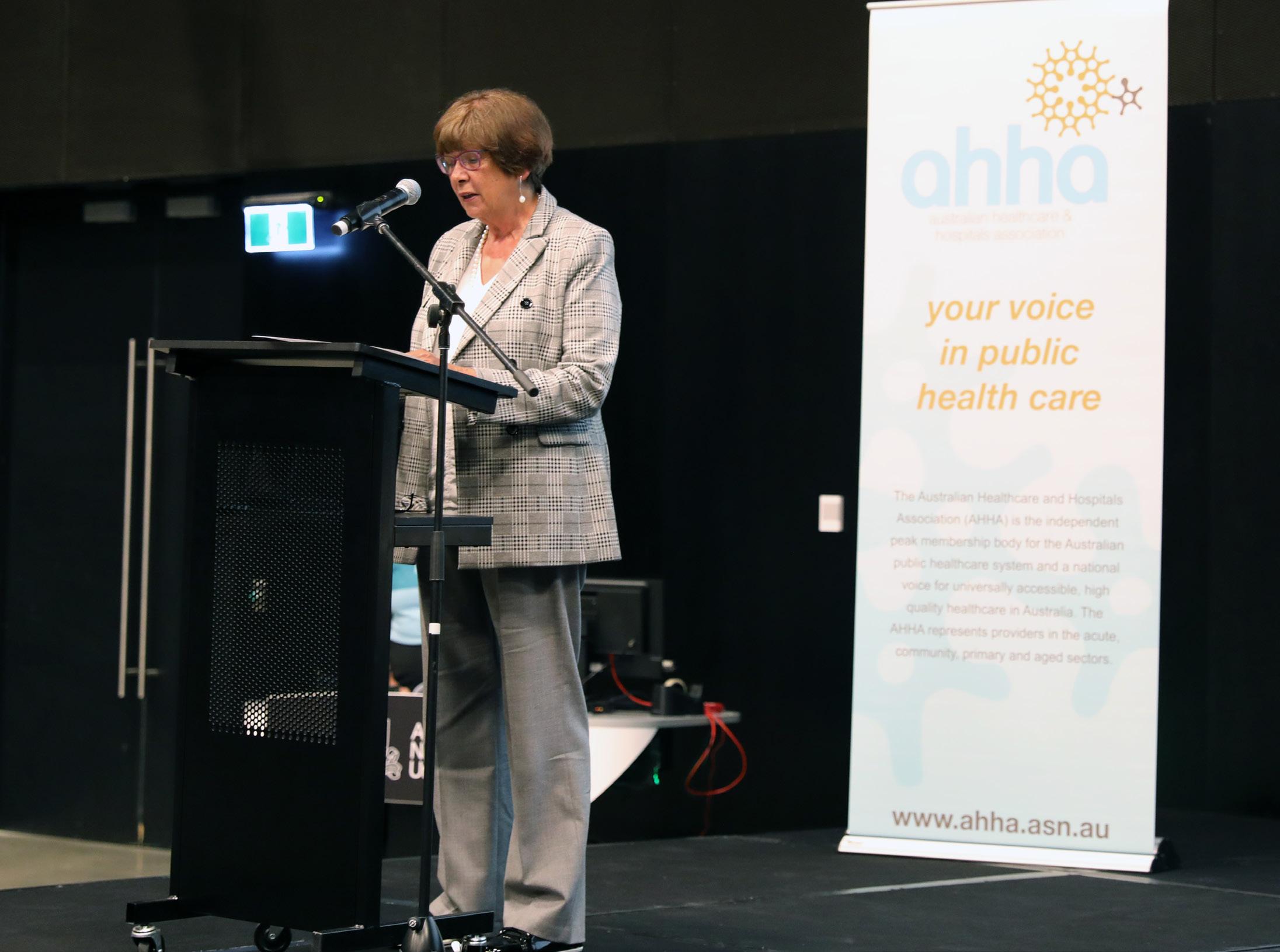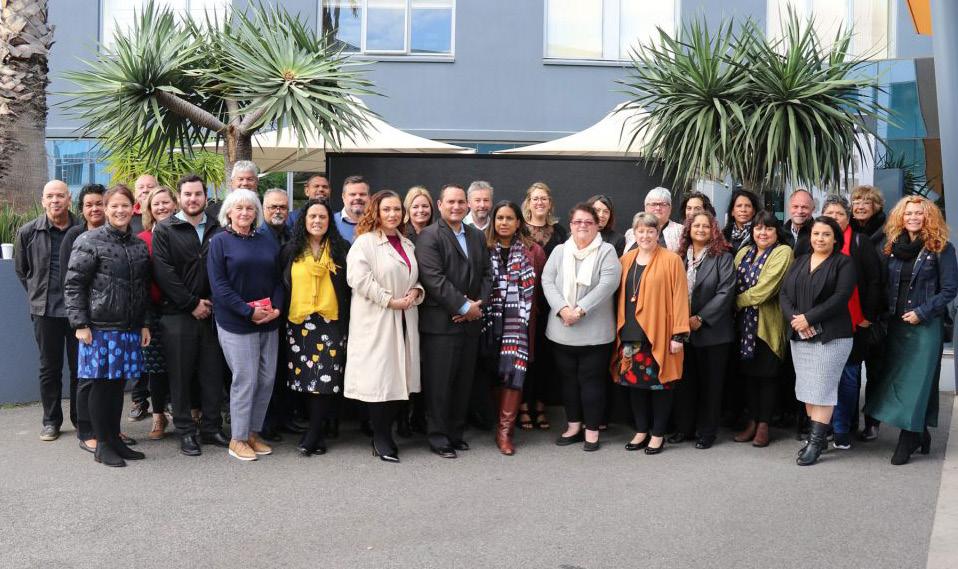
4 minute read
From COVID-19 to Closing the Gap
NACCHO CEO Pat Turner presenting at the AHHA 2020 Sidney Sax Award ceremony.
The success of the Aboriginal Community Controlled Health Organisations (ACCHOs) in keeping COVID-19 out of Aboriginal and Torres Strait Islander communities has come as a welcome shock to most. Less than 150 Aboriginal people have contracted COVID-19 Australia-wide. Our share of the COVID-19 caseload was 0.5% when our share of the national population is 3.3%. This has been a wonderful achievement.
Advertisement
But pandemics are best defeated by communitybased action and the very ACCHO model itself is fundamentally about community control. It was no surprise to us. And there was too much at stake for us to fail. Look at what happened to the Navajo. They have the highest death rate of any ethnic group in the USA. If the virus had got into Aboriginal and Torres Strait Islander communities, the consequences would have been catastrophic with our levels of comorbidity and social disadvantage.
Representatives from the Coalition of Peaks, a representative body of around 50 Aboriginal and Torres Strait Islander community controlled peak organisations.

While the press has been calling the pandemic and the measures to combat it ‘unprecedented’, the virus for Aboriginal and Torres Strait Islander people is, sadly, a familiar tale. Aboriginal people have been battling pandemics since 1788. The success of the measures put in place by our ACCHOs is well documented. In any case, it was told in The Health Advocate by Chris Bourke as recently as August.
Another significant aspect of our work is the successful negotiation of a new National Agreement on Closing the Gap.
There is no doubting in my mind that the Uluru Statement is a beautifully written, simple message for all Australians. It certainly is ‘straight from the heart’. But while its rejection was disappointing, we cannot wait for people to embrace it. We have to keep moving forward.
The Coalition of Peaks — which NACCHO has led — is a prime example of what can be done. Its work in getting the Closing the Gap process back on track is self-determination in action. Only two of the old targets were on track. For example, in Australia, Aboriginal and Torres Strait Islander people can expect to live ten years less than other Australians. Life expectancy is longer in Bangladesh and Azerbaijan than for our people. When the Commonwealth began to redraft the targets, they said that they would consult with our people. But lip service was being paid to the consultation process and the same mistakes looked like they were going to happen all over again.
So, we drew a line in the sand. NACCHO led the response. We represent 143 members operating 550 clinics that deliver 3.1 million episodes of care each year to 410,000 people. As such, we were well-positioned to lead the rejection of the Commonwealth’s process and to invite all governments to work with us in a genuine partnership. Together, we wrote to the Prime Minister, Premiers and Chief Ministers. From 14 Aboriginal groups back in 2018 we are now over 50. By staying strong and unified, our voice cannot be ignored.
On 6 December 2018, the Prime Minister met with us and acknowledged that the current targets were ‘government targets’ and, that for Closing the Gap to be successful, we had to be able to take formal responsibility for the outcomes through shared-decision making. Six days later, the heads of the Commonwealth, state and local governments publicly committed to develop a genuine partnership with us through which a new Closing the Gap framework could be agreed. It was the first time that there has been formal decision making with our peoples in this way. From now on, we will be sitting at the table as partners alongside governments to resolve key policy questions for our communities across the country.
The new National Agreement on Closing the Gap has the potential to be a game-changer. Since it was signed, steady progress has been made. But pressure needs to be kept on governments to maintain their commitments and to apply the principles of reform that they all signed off in July 2020. It will be a critical year ahead.
Perhaps COVID-19 played a role late in this process. The pandemic came and, although unfunded at first, our clinics just put on their rubber gloves, masks and gowns and got on with it. As an accidental outcome of all this, we find that governments are more willing to acknowledge us and to cooperate with us. Let’s hope it lasts. Let’s hope they honour their commitments to Closing the Gap and work with us to build community solutions across all policies and programs for all Aboriginal and Torres Strait Islander peoples.










